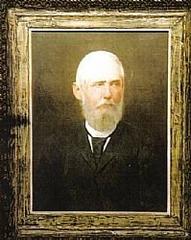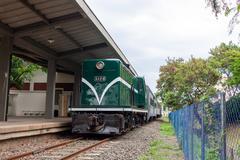Cruzeiro Franciscano Visiting Hours, Tickets, and Travel Guide – Itu, Brazil
Date: 14/06/2025
Introduction
Nestled in the heart of Itu, São Paulo, the Cruzeiro Franciscano stands as a testament to Brazil’s layered colonial history and its enduring Afro-Brazilian heritage. Constructed in January 1795 by Joaquim Pinto de Oliveira—known as Mestre Tebas, a master stonemason of African descent—the monument embodies a unique blend of indigenous, African, and European influences. As the sole surviving element of a once-extensive Franciscan complex, the Cruzeiro Franciscano offers an authentic glimpse into Itu’s religious and cultural evolution. This comprehensive guide covers visiting hours, accessibility, historical background, restoration efforts, and tips for making the most of your visit to this remarkable landmark (Jornal de Itu; UOL Notícias; turismo.itu.sp.gov.br).
Historical Background
Origins and Construction
The Cruzeiro Franciscano, completed in January 1795, was part of a broader Franciscan complex, including a convent and church, which no longer survive. Its construction is a rare surviving example of Mestre Tebas’ artistry—one of only three remaining works by the renowned Afro-Brazilian architect known for his mastery in stonework (UOL Notícias). The cross was crafted from local varvito stone and arenito (sandstone) sourced from Sorocaba, highlighting regional materials and Tebas’s technical skill.
Franciscan Influence in Itu
The Franciscans, supported by the region’s sugar producers, were instrumental in shaping the city’s religious and social landscape in the late 18th century. The Cruzeiro became a focal point for religious ceremonies, processions, and public gatherings, symbolizing the introduction of European religious customs and blending them with local traditions (Jornal de Itu).
Architectural and Artistic Significance
Standing approximately nine meters high, the Cruzeiro Franciscano features intricate carvings and motifs that blend Christian iconography with indigenous influences, reflecting the syncretic cultural environment of colonial Brazil. Its form is reminiscent of similar crosses in northeastern Brazil’s sugar regions, underscoring its architectural and historical relevance (Jornal de Itu).
Visiting the Cruzeiro Franciscano
Location and Setting
The monument is located at Praça Dom Pedro I in Itu’s historic center, a lively square surrounded by colonial-era buildings and visitor amenities, including the Tourist Information Center (turismo.itu.sp.gov.br).
Visiting Hours & Tickets
- Opening Hours: Daily, 8:00 AM – 6:00 PM
- Admission: Free; no tickets required
As the Cruzeiro Franciscano is an open-air monument in a public square, visitors can explore at any time within daylight hours for optimal safety and viewing.
Accessibility
The square is generally wheelchair accessible, with paved pathways and nearby amenities. Some historic paving stones are uneven, so visitors with mobility challenges should exercise care. Public restrooms and baby-changing facilities are available nearby.
Getting There & Travel Tips
- By Car: Itu is ~100 km from São Paulo, with paid parking lots near the historic center.
- By Bus: Itu’s central bus station is within walking distance.
- Best Time to Visit: Dry season (April–September) offers comfortable weather for walking tours and photography.
Guided Tours & Special Events
- Trilha do Eixo Histórico: Guided walking tours depart from Praça Dom Pedro I on Tuesdays, Wednesdays, Thursdays, and Saturdays at 8:30 AM, covering several historic sites over approximately 4.5 hours (turismo.itu.sp.gov.br).
- Cultural Events: Look for festivals and religious celebrations, especially on Franciscan feast days and during Afro-Brazilian heritage commemorations.
Nearby Attractions
Combine your visit with:
- Museu e Arquivo Histórico Municipal “Synésio de Sampaio Góes” – Features artifacts uncovered during restoration (Itu City Hall).
- Igreja Matriz de Nossa Senhora da Candelária – Notable for its colonial architecture.
- Casa Imperial – Historically significant as a former royal residence.
- Historic Center Walking Tours – Numerous colonial buildings and museums await exploration.
Conservation, Restoration, and Community Engagement
Restoration Efforts
The Cruzeiro Franciscano is a designated heritage site, protected by CONDEPHAAT and IPHAN. Major restoration between 2021–2022, funded by state and municipal resources, included archaeological excavations that unearthed over 190 artifacts—including indigenous ceramics and religious items—offering deeper insights into Itu’s multicultural past (Jornal de Itu; Itu City Hall). Community involvement in the restoration process fostered local pride and stewardship.
Ongoing Conservation
The monument faces typical challenges associated with outdoor stonework: weathering, biological growth, and urban pollution. Local and national conservation bodies conduct regular maintenance and structural assessments, ensuring the monument’s longevity and authenticity (itu.sp.gov.br). Digital outreach and educational programs further promote public awareness and engagement.
Visitor Experience
Interpretive Materials
Informational signage (in Portuguese) provides historical context and explains restoration work. Artifacts from recent excavations are on display at the local historical museum.
Amenities
- Benches and shaded areas for relaxation
- Nearby cafes and restaurants for refreshments
- Public toilets and tourist facilities at the square
Photography & Best Times
Early morning and late afternoon offer the best light for photography. Respect ongoing religious services and cultural events when taking photos.
Frequently Asked Questions (FAQ)
Q: What are the Cruzeiro Franciscano visiting hours?
A: Daily, 8:00 AM to 6:00 PM.
Q: Is there an admission fee?
A: No, visiting is free of charge.
Q: Are guided tours available?
A: Yes, via the “Trilha do Eixo Histórico” and local tourism offices.
Q: Is the site accessible for visitors with disabilities?
A: The square is generally accessible, though some uneven paving may require caution.
Q: Where can I learn more about restoration findings?
A: Artifacts are exhibited at the Museu e Arquivo Histórico Municipal “Synésio de Sampaio Góes.”
Summary of Key Points & Planning Tips
- Historic Significance: Built in 1795 by Mestre Tebas; only surviving structure of the original Franciscan complex.
- Heritage Status: Protected by CONDEPHAAT and IPHAN.
- Free Entry: Open daily, 8:00 AM–6:00 PM; no tickets required.
- Guided Tours: Available through the municipal tourism office.
- Accessibility: Generally accessible, with some minor limitations due to historic paving.
- Nearby Attractions: Museum, colonial churches, Casa Imperial, and Itu’s historic center.
- Community Involvement: Restoration and conservation efforts include local participation and educational outreach.
- Best Visiting Tips: Visit in the dry season, consider guided tours, and combine with other historical sites for a full experience.
Conclusion
The Cruzeiro Franciscano is more than a monument—it is a living symbol of Brazil’s rich past, Afro-Brazilian craftsmanship, and Franciscan legacy. Visitors are invited to explore its artistry, attend cultural events, and engage with Itu’s vibrant community. For the latest updates on hours, tours, and events, download the Audiala app or visit official tourism channels.
Plan your visit to the Cruzeiro Franciscano and immerse yourself in the historic and cultural heart of Itu. Your journey into Brazil’s colonial legacy begins here!
Internal Links
- [Itu Historical Sites Walking Tour Guide]
- [The Legacy of Mestre Tebas]
- [Exploring Itu’s Colonial Churches: A Visitor’s Guide]


